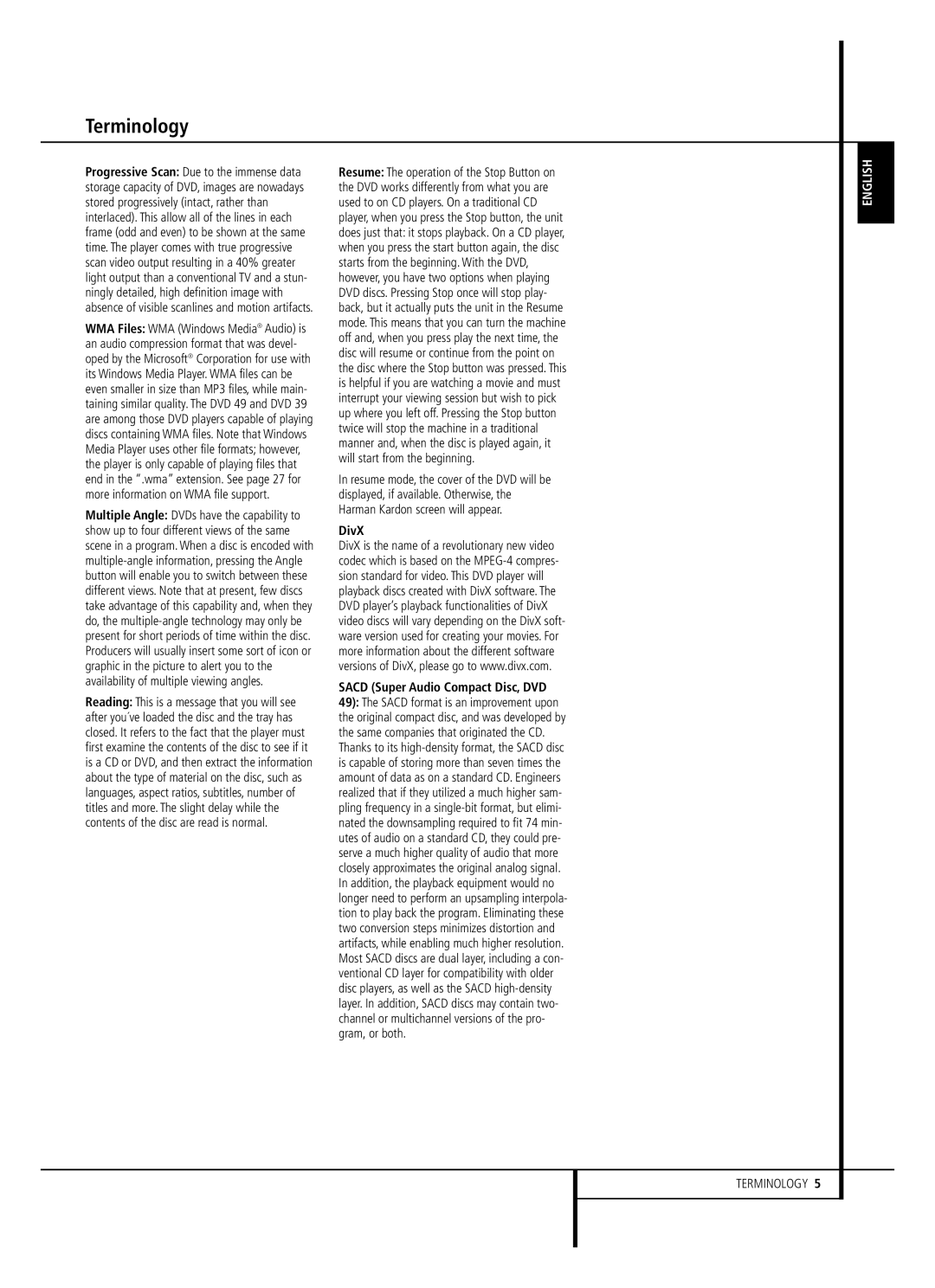
Terminology
Progressive Scan: Due to the immense data storage capacity of DVD, images are nowadays stored progressively (intact, rather than interlaced). This allow all of the lines in each frame (odd and even) to be shown at the same time. The player comes with true progressive scan video output resulting in a 40% greater light output than a conventional TV and a stun- ningly detailed, high definition image with absence of visible scanlines and motion artifacts.
WMA Files: WMA (Windows Media® Audio) is an audio compression format that was devel- oped by the Microsoft® Corporation for use with its Windows Media Player. WMA files can be even smaller in size than MP3 files, while main- taining similar quality. The DVD 49 and DVD 39 are among those DVD players capable of playing discs containing WMA files. Note that Windows Media Player uses other file formats; however, the player is only capable of playing files that end in the “.wma” extension. See page 27 for more information on WMA file support.
Multiple Angle: DVDs have the capability to show up to four different views of the same scene in a program. When a disc is encoded with
Reading: This is a message that you will see after you´ve loaded the disc and the tray has closed. It refers to the fact that the player must first examine the contents of the disc to see if it is a CD or DVD, and then extract the information about the type of material on the disc, such as languages, aspect ratios, subtitles, number of titles and more. The slight delay while the contents of the disc are read is normal.
Resume: The operation of the Stop Button on the DVD works differently from what you are used to on CD players. On a traditional CD player, when you press the Stop button, the unit does just that: it stops playback. On a CD player, when you press the start button again, the disc starts from the beginning. With the DVD, however, you have two options when playing DVD discs. Pressing Stop once will stop play- back, but it actually puts the unit in the Resume mode. This means that you can turn the machine off and, when you press play the next time, the disc will resume or continue from the point on the disc where the Stop button was pressed. This is helpful if you are watching a movie and must interrupt your viewing session but wish to pick up where you left off. Pressing the Stop button twice will stop the machine in a traditional manner and, when the disc is played again, it will start from the beginning.
In resume mode, the cover of the DVD will be displayed, if available. Otherwise, the Harman Kardon screen will appear.
DivX
DivX is the name of a revolutionary new video codec which is based on the
SACD (Super Audio Compact Disc, DVD 49): The SACD format is an improvement upon the original compact disc, and was developed by the same companies that originated the CD. Thanks to its
ENGLISH
TERMINOLOGY 5
